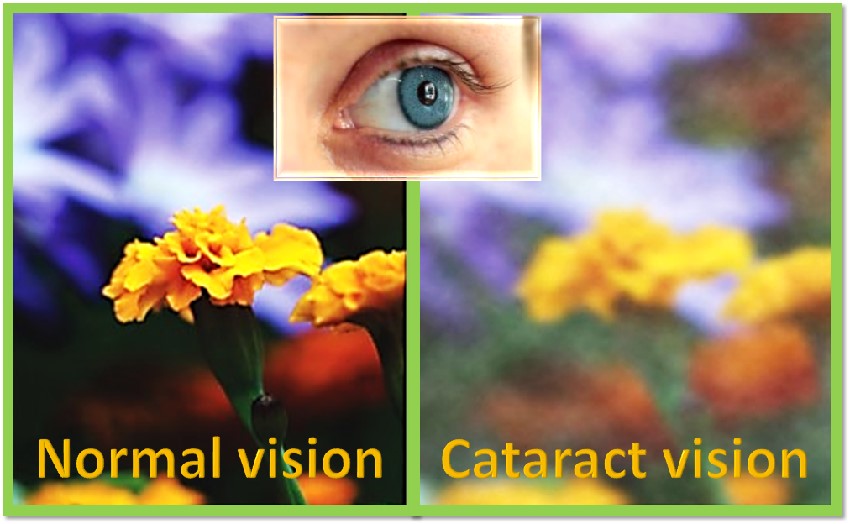
Must know answers to your cataract questions
As we get old our eyes start getting more blurred and vision becomes poor. Either we will need reading glasses to read or may end up permanent eye glasses for all types of work. The common reason for this change in eye vision is development of cataract in one eye or both eyes.
Must know answers to your cataract questions:
Cataract is a clouding of the eye lens that affects the vision and is very common in elderly and older people. By the age 80 most of elderly population throughout the world will face this problem and many will undergo cataract surgery. Most cataracts that occurs are related to aging. However, at age of 40-50 one can get cataract based on several conditions and exposure of eyes to various situations.
What exactly is lens? Lens is the clear part of an eye that helps to focus light, an image on the retina. Retina is the light sensitive tissue present at the back of the eye. In a normal eye, light passes through the lens to retina. In retina light, will be changed to nerve signals and send to the brain. Lens must be clear to perform their work and to receive sharp image by retina. If the lens is cloudy we get distracted images. The cloudiness is nothing but cataract.
Causes of cataracts:
Lens is present behind the pupil and the iris and works as camera lens. It adjusts the eye’s focus and helps us to see things clearly from far and closer distances. Human eye lens is made of water and protein. Proteins are arranged in such a way that they keep lens very clear for passing of light through lens. As we age some of the proteins will clump together and accumulate appear as cloud. This is called cataract. Initially cataract will be small and grows larger as we get old and completely covers the lens making them hard to see.
Some other causes support cataract development: Smoking, conditions like diabetes, wear and tear of the protein in lens, eye abuse, exposure to more UV light, hot weather, addiction to alcohol etc. Cataract also can be due to high steroid use!
What happens to the vision?
- Blurred and duller vision due to protein clumping’s and cloudiness
- Lens will change color to yellowish/brownish color with brownish tint to vision. Person will be unable to distinguish certain color: Purple or dark green or blue may appear as black color
Symptoms: Common symptoms of cataract are:
- Cloudy or blurry vision.
- Faded color vision – unable to distinguish colors
- Glare of lights: Headlights, lamps, or sunlight may appear too bright. A halo may appear around lights.
- Poor vision during evening and night.
- Double vision or multiple images in one eye
- Frequent prescription changes of eyeglasses or contact lenses.
All the above symptoms can be of cataracts or other eye problem too.
Cataract detection: Through eye exams – eye care professionals will perform tests on your vision and will check health of your eyes.
What are other types of cataracts one can have?
- Secondary cataract: Cataracts can form after surgery for other eye problems, such as glaucoma. Or people who have conditions such as diabetes.
- Traumatic cataract. Eye injury may result in cataract after few years too.
- Congenital cataract. Babies may have born with cataract in both eyes. These cataracts may be so small that they do not affect vision. If they do, the lenses may need to be removed.
- Radiation cataract. Exposure to certain types of radiation results in cataract.
Treatments:
- Symptoms during early stages may be improves with new eyeglasses, bright lights, anti-glare sunglasses or one can use magnifying lenses to reduce stress on eyes.
- Surgery is only effective treatment for cataract – it involves removing the cloudy lens and replacing with artificial lens. During surgery, lens inside the eye that has become cloudy is removed and replaced with an artificial lens (intraocular lens) to restore a clear vision
- Cataract will be removed only when it interferes with a person’s everyday activities – driving, reading, tv, or stress in eyes.
- If any of these measures does not help talking to doctor and understanding the pros and cons of cataract surgery is better. Doctor’s suggestion will help to make right decision – to go through surgery immediately or it can wait.
- Cataract need to be removed immediately or as soon as possible only in those cases where a person is facing age -related macular degeneration or diabetic retinopathy.
- How effective is cataract surgery: It is one of the common surgery people undergo in the world. And is considered as the safest and most effective type of surgery. It will help in regaining clear vision. It is like removing the dust accumulated on the mirror.
What are the risks of cataract surgery?
- May be infection, bleeding are two types of risk one can expect. If the person has any condition, during surgery time he/she may need to stop take medication that interferes with bleeding during surgery. Washing hands and keeping away from dust particles is very critical after surgery or infection may develop. A slight risk of retinal detachment if one already has high myopia or nearsightedness. This retinal detachment is a medical emergency and must be attended by a surgeon as soon as possible. Your eye must be examined by an eye surgeon as soon as possible.
How to take care of vision?
- Stop smoking – if you are a smoker
- Reduce alcohol consumption
- Wear sunglasses and a hat to block UV light exposure
- Eat green leafy vegetables, fruit and foods rich in antioxidants. All orange and yellow color fresh produces are good. Consume food that are rich in Vitamin A.
- Include carrot in your diet: Carrots contain beta carotene. Our body converts beta carotene to a type of vitamin A called “retinal,” – it is a key molecule involved in maintaining normal vision.
- Go through eye exam once in 3 to 4 years between age 20-35. After 35 have an eye checkup – dilated eye exam once in two years.
- As you age, ask your doctor to check for age-related macular degeneration, glaucoma, and other vision disorders. Early treatment for many eye diseases may save your sight.
References:
- http://www.allaboutvision.com
- https://nei.nih.gov
- Image credit: https://www.retinaspecialistsnj.com/surgical-treatments/cataracts
Author: Sumana Rao | Posted on: November 27, 2018




















Write a comment